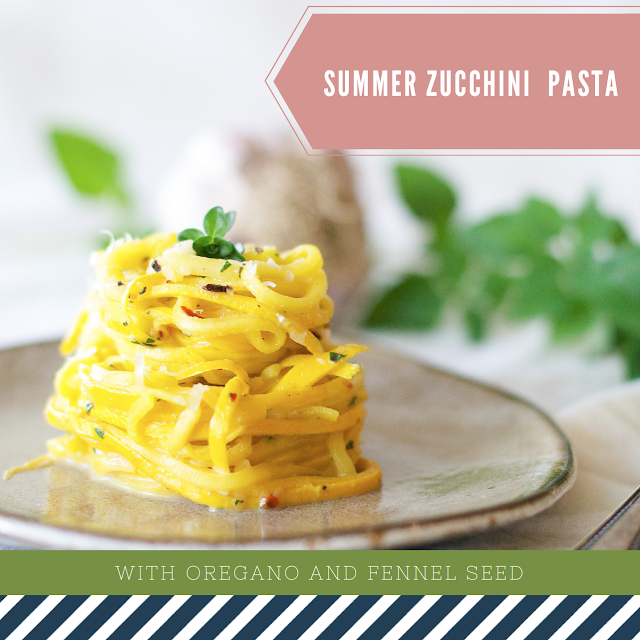Easy Summer Zucchini Pasta with Oregano

Did you know that the COLOR and SMELL of fruits and vegetables is due to their phytonutrient content??
The more vivid in color and the more aromatic a fruit or
vegetable, the more concentrated the phytonutrients in the product.
Phytonutrients are important compounds that have been found to have a wide
variety of positive effects on the human body, including reducing inflammation,
acting as powerful antioxidants, aiding in hormone regulation, and even playing
a powerful role in preventing cancer. So lets get to know some of summer’s
earliest rock stars!


TOMATOES
Although thought of as a vegetable, tomatoes are actually
fruits that are rich in the phytonutrient lycopene. Most abundantly found in tomatoes,
watermelons, pink grapefruits, and apricots, lycopene has been found to be
inversely related to developing cancer found in the prostate gland, lung, and
stomach and may also be able to inhibit tumor growth (1). Furthermore, lycopene has been found to be a
potent antioxidant, which may also help reduce the risk of developing
cardiovascular disease by reducing inflammation (2).
TIP: Make sure to eat
tomatoes with a high quality oil, like extra virgin olive to aid in the
absorption of the fat soluble phytonutrients.
CHERRIES
Rich in powerful anti-inflammatory compounds, anthocyanins
found in cherries have shown to act similar to NSAID drugs, dampening the
inflammatory response within muscle tissue. Furthermore, reductions in serum inflammatory
marker CRP were noted after 2 servings of Bing cherries (3). This is an
indication that cherry consumption may help reduce systemic inflammation within
the body.
TIP: Anthocyanins are
more concentrated in dark and tart cherries.



SUMMER SQUASH
This abundant garden vegetable is not only rich in fiber but
also rich phytonutrients that have shown to have many positive effects
including reducing the risk of ulcers, promoting the growth of friendly
bacteria, and supporting overall health via anti-inflammatory and antioxidant
capabilities (4, 5). Plus due to its rich fiber content it can help balance
blood sugar levels and fuel friendly bacteria in the colon. It's a win-win
situation.
Tip: Turn zucchini
into a delicate pasta by using a julienne or spiralizer. Then toss with your
favorite pesto or sauté with garlic and extra virgin olive oil.
So I hope you skip the grocery store and head to your local
farmer’s market to load up on these delicious goods! Every color and every
smell offers something special. May the natural beauty of your exciting market
finds transform into a delightful dish to share with friends and family.
Summer Zucchini Pasta
Serves two as a side (or 1 as an entree)
INGREDIENTS
1 large zucchini (green or yellow)
1 ½ tsp ghee or extra virgin olive oil
2 cloves garlic, finely minced
½ tsp fennel seeds
¼ tsp chili flakes
1 ½ tsp packed fresh oregano, finely minced
Sea salt and ground pepper
Handful fresh feta
Handful finely grated parmesan (I used a microplaner)
Garnish: freshly minced thyme and/or rosemary
DIRECTIONS
Using a julienne peeler peel the zucchini into thin ribbons.
Stop peeling once you get to the seeds. Set the peeled zucchini strands aside.
In a medium sauté pan, heat the ghee over medium low heat and add the finely minced
garlic, fennel seeds, and chili flakes. Sauté until fragrant.
Add the zucchini ribbons and the freshly minced oregano...it should sizzle in the pan...if not then increase heat to medium. Stir to combine and season with a generous pinch sea salt and fresh ground pepper. Cover and allow to cook another 2-3 minutes until the zucchini
is tender. Once the zucchini is tender reduce heat to low and toss in a handful of feta and grated parmesan. Stir to combine and cover once again. Allow noodles to rest 2-3 minutes until a nice cheesy zucchini broth is formed.
To serve, use a large fork to twirl the pasta onto a large spoon and serve in little pasta mounds preferably in a deep pasta dish or bowl. Evenly distribute the cheesy zucchini sauce over each mound. Garnish with finely minced herbs. This dish tastes great along side a salad and grilled meats or seafood (especially shrimp), topped with a Bolognese
sauce made with freshly picked tomatoes, or simply just eat the pasta on its own…its that delicious!!
Note: You can easily double, triple, quadruple this recipe---you get even more delicious sauce that way!
Note: You can easily double, triple, quadruple this recipe---you get even more delicious sauce that way!
_______________________________________________________________________________
References:
1. Gajowik A, Dobrzynska M. Lycopene – Antioxidant with
Radioprotective and anticancer properties-A Review. National Institute of Public Health. 2014;65(4):263-271.
2. Burton-Freeman BM, Sesso HD. Whole Food versus
Supplement: Comparing the Clinical Evidence of Tomato Intake and Lycopene
Supplementation on Cardiovascular Risk Factors. Adv Mitr. 2014;5:457-485.
3. Bell PG, McHugh MP, Stevenson E, Howatson G. The role of
cherries in exercise and health. Scand J Med Sci Sports.
2014;24(3):477-90.
4. Sharma D, Rawat I, Goel HC. Anticancer and
anti-inflammatory activities of some dietary cucurbits. Indian Journal of Experimental Biology. 2015;53:216-221.
5. Sharma D, Rawat I, Goel HC. Antioxidant and Prebiotic
Potential of Some Cucurbits. Res J Med
Plant. 2012;6(7):500-510.


.jpg)